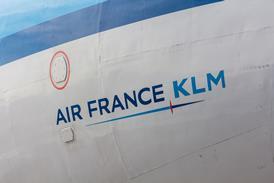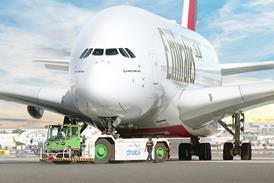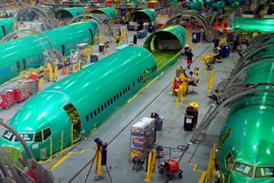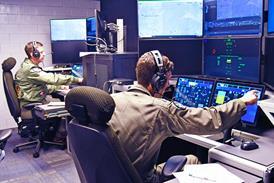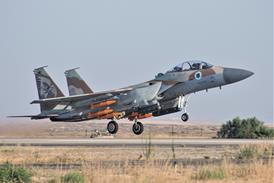The industry is changing the way it recruits personnel as it strives to find new managers and specialists who can cross disciplines
Until the great post-Second World War consolidation of the industry and the loss of most of the famous names in aviation, aircraft and the engines that powered them were usually designed, manufactured, tested and sold from a single aircraft factory. A worker would often remain with the company for life, from apprenticeship, identifying totally with the company and the aircraft it produced.
Today, apart from the continuing imperative of pristine cleanliness, a factory worker from that era would recognise little in a modern aircraft assembly hall. The dominant sound of rivets being pneumatically hammered home by workers clambering about the airframe is giving way to a calmer atmosphere; the riveters are being replaced by huge machines that quietly go about their business, stitching together the tubes and panels that will become the finished aircraft.
Today, also, the components that make an aircraft, whether civil or military, are often imported from remote factories located in other countries, which means the workforce concerned with designing, building and testing an aircraft is an international one. Added to this, particularly in Europe, is the advent of cross-border consolidation, bringing with it cultural differences that must be surmounted.
Fewer workers
While in the modern aerospace industry there are still plenty of highly skilled single-role specialists on the "shop floor", the advent of machines has not only reduced the size of the labour force but has fundamentally changed its nature. The trend, according to all of the major aerospace companies which contributed to this article, is towards workforces comprising people with abilities across several disciplines.
"We need multi-disciplinary people with excellent communication skills, open minds and a good understanding of culture," says Karen Tegtmeier, senior manager, marketing and recruitment at Airbus. "All of our projects are international and so we're talking to universities and colleges all over Europe about the need for multi-disciplinary training." She wants European institutions to catch up in this respect with those in the USA and the Netherlands, which she says are "much more project and cross-discipline-oriented than ours. The situation is improving, but not at the speed we'd like."
At EADS, formed in July 2000 in the biggest ever international consolidation in the aerospace industry, the workforce had to accept early on the requirement for cross-disciplinary skills and the formation of international teams throughout the company. "We're probably one of the few truly European organisations in terms of structure," says head of human resources at EADS, Jussi Itävuori. "All of our businesses are responsible for industrial activities in different countries, so there are international teams deep down in our structure."
He admits this brings its own challenges, "but we're proving it can work. The history of this industry is national, so it's a challenge to bring international skills on board. The basic competences we are now looking for include not just language skills, but international experience, as well as good technical skills, people management abilities and a good understanding of business."
Bigger picture
Boeing's director of global staffing, Rich Hartnett, confirms that the US manufacturer has long been committed to multi-disciplinary staffing. The requirement became even more of an imperative when Boeing expanded from being a platform supplier to a provider of integrated services. "We underwent a major shift away from single-skill engineers," he says. "Today we're less focused on specific skills and more towards what we call the Boeing system of large-scale assembly and integration. This means a different kind of workforce."
Hartnett says there is a significant movement within universities and colleges to get many different departments involved in multi-disciplinary studies. "This reflects the fact that our programmes are far more integrated than they used to be."
At Northrop Grumman, the urgent need is for more software and systems engineers, says human resources director John Krakowski: "We can't get enough of them." He adds that it is also "tough" finding project management people coming out of universities and colleges: "We find we have to train them in industry, which takes typically around two years".
In Europe, multinational programmes such as the Airbus A380, NH Industries NH90 helicopter and forthcoming Airbus Military A400M transport are contributing to long-term optimism about employment, even though recent years have seen major cuts. According to the European Association of Aerospace Industries (AECMA), the total number of employees in the European aerospace industry declined from 429,100 in 2000 to 407,800 in 2002. If the supply chain outside Europe is included, the total number of jobs is at least twice that number. In the USA, according to the Aerospace Industries Association, employment for the sector fell for the fifth straight year, by 43,900, to 616,800. Figures for 2003 indicate a further fall of 41,400.
Stability ahead
These reductions are directly attributable to 11 September, SARS and reducing defence budgets. Most agree that the longer-term picture is one of stability. EADS now employs 107,000, up from 98,000 three years ago - mainly through higher employment at Airbus. "The total will go to around 108,000 in 2004, then I believe we will stabilise," says Itävuori. The problem, he says, is much more one of where to find the employees of the future. "The coming retirement of the baby boom generation means I have a major recruitment challenge looming at the end of the decade."
The same is true at Northrop Grumman and Boeing. Hartnett says: "If there are clouds, they're about finding more graduates as the current generation retires. We're now in competition with other, non-aerospace industries." He says such industries include the entertainment business, where there is demand for people versed in the science of virtual reality who learned their trade in the simulation business.
"The ageing workforce is a real challenge," says Krakowski. "We're taking care to tap the expertise of the people going out and feed it into the younger workforce."
Changing demographics are also providing concerns for future recruiting. This year will, for example, be the first year in Germany in which more people will retire than enter the job market. France, Spain and the UK are set to follow. In the USA, society is moving towards greater ethnic diversity, which means the traditional majority proportion of anglo saxon-derived personnel in the aerospace industry will have to move towards an ethnically more broadly-derived workforce.
One answer to the expected future shortage of graduates, strongly supported by Itävuori, is to bring more women into the industry. He says: "Traditionally this industry has been male-dominated, but there is no factual or competence reason why women can't do as well as or better than men." The current industry average for employing women is 14%, although Airbus has pushed this to 20%. "That's what we're aiming for," says It„vuori.
At the 2003 Paris air show, EADS gathered together 100 women from all over the world from almost every corner of the aerospace industry to celebrate 100 years of flight and to make the point that bringing women into the industry was a strategic ambition rather than an attempt to satisfy politically correct objectives. "In the context of this industry's expansion and the evolution of the future employment market…women will be an indispensable advantage," says EADS co-chief executive Philippe Camus.
Donna Wildrick, senior manager, global staffing for critical skills recruiting at Boeing, says one of the biggest challenges today is to attract what she calls "passive jobseekers", in other words people in other companies and, increasingly, industries, who are not actively looking for a job with Boeing. While there is nothing new about headhunting, the techniques being used to pull people in Boeing's direction are becoming ever more imaginative, combining media presentations with the most attractive employment packages Boeing has ever offered, including, for example, 100% tuition reimbursement for any Boeing employee, anywhere, for virtually any course the employee wishes to follow.
In-house skills
Airbus has hired more than 7,000 staff in the last two and a half years because of the A380 and the increasing size of the Airbus fleet needing product support services. Of these, says Tegtmeier, around half are graduate and post-graduate. She adds that "for A380 production we're bringing in internally qualified people to take advantage of their experience for the first time", highlighting the continuing need for skills which have been developed in-house.
All major aerospace companies depend on partnerships with universities as a way of ensuring they can draw on a ready-made pool of future employees. Airbus supports 1,500 internships a year, while Boeing has been "extremely active" in providing support to more than 200 universities and colleges.
Overall, according to AECMA, 29% of employees at technical level have a university degree or equivalent, while a further 33% received an education at below university level. The organisation adds that "even manual workers, accounting for 38% of all employees, have been highly trained for the sophisticated tasks inherent in the industry".
The UK is the European country with the largest number of aerospace-related employees, accounting for more than 25% of the European total in 2002, at 117,300. The UK industry followed the global trend after the 11 September attacks and suffered badly in the short term, but according to the Society of British Aerospace Companies, is expected to recover to its original growth of 5% a year.
Differences
Despite this, Tegtmeier says the UK is assailed by the problem that aerospace is not regarded as being as attractive as other "softer" professions, whereas in France it is seen, she says, "as one of the dream jobs". Rolls-Royce, however, believes the overall calibre of student is improving. Margaret Gildea, director of learning and career development, says this reflects R-R's tougher job specifications, for which there is no shortage of interest from students. R-R now employs 25% of its 35,000 workforce abroad, having diversified strongly into other countries in recent years. "Employee diversity is one of our goals, because our customers are global and so, therefore, should be the workforce," she says.
Apprenticeships remain one of the principal areas in which R-R brings employees into the company. "We're great supporters of it," says Ken Fulton, head of career development, engineering. "The numbers taking apprenticeships is rising," he says. "They still provide the ideal platform for training in technical skills, communications and teamwork." Gildea adds that learning about the need for teamwork "is incredibly important, because we're moving all the time towards more self-directed teams. This increases empowerment, and therefore job satisfaction, as well as productivity."
France has always been able to draw on its unique "Grandes Ecoles" for talent. Created during the Renaissance to meet a perceived need for more specialised institutions outside the universities, these educate prospective engineers up to the equivalent level of Master of Engineering.
Sixty per cent of France's managing directors and chief executives in France's top 100 companies are from the Grandes Ecoles. In aeronautics the best known is Supaero, at Toulouse, the premier aeronautics and space education establishment in France, usefully based in Airbus's back yard.
Snecma, one of the biggest engine and equipment suppliers in Europe, has always depended on the Grandes Ecoles to provide the quality of personnel it needs. "We typically take 80% of our staff from them," says Philippe Bry, senior vice-president, management. "This has been the case for many years. He warns, however, that in the era of virtual technology and visualisation, "we don't want people to forget the basics. They still need to know what 10 grammes feels like as a weight. We don't want colleges to lose sight of physical reality."
Staff retention
Staff turnover at Airbus is around 2% a year - double that at state-owned Snecma and less than half the average for other engineering-based industries. "This reflects the general view that aerospace is still seen as a 'romantic' place to work, with a long-term, relatively stable, future," says Airbus's Tegtmeier. "People are proud of the product and the company. We're very well integrated and we try and keep people on board. After 11 September we did all we could to avoid layoffs." Boeing's Donna Wildrick says: "At job fairs and on campuses we see there's still a passion for this industry. But we still have to show that Boeing is the best company to work for."
EADS ranks in the top three companies in Europe seen as attractive by graduates. "Today, aerospace is still seen as high technology and with a high 'fascination factor'. That means we can select the best," says It„vuori. "The new generation is very important, but we will have higher objectives in terms of global presence."
Expansion to eastern Europe, Russia, China and India "will bring a greater cultural gap than we see today," he adds. While believing this will be a positive development, he sounds a note of caution. "We need to recognise that in terms of achieving an international mindset, we still have a long way to go. But I believe it can be done."
Diversity, says Krakowski, is a key requirement of the future employee. "The workforce of the future is a little of everything. We believe if you're not looking at a diversity, in terms not only of engineering and management, but also religion, sex and race, you're going to be missing out".
JULIAN MOXON / LONDON
Source: Flight International

